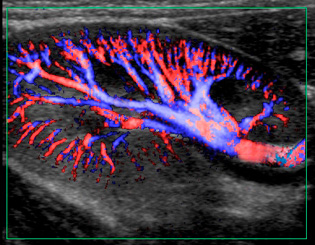


Renal Flow ↑ GFR
Renal Perfusion or an increase in kidney blood flow is the earliest sign that a treatment for PKD is working. This is the outcome from the CRISP study. The CRISP study determined what parameters doctors could follow to ascertain if a treatment was beneficially working for PKD polycystic kidney disease. Prior to the CRISP study researchers had to wait 20 years or more to see if a PKD treatment worked or not. Laying down increases the kidney perfusion flooding the kidneys with blood. Taking adequate rest helps increase the cystic kidney blood flow.Body position increases kidney blood flow, renal perfusion, increasing GFR. Certain blood pressure medications aides the flow of blood to the kidneys. Heat given to rats, increases GFR. The problem with increasing blood flow is it also increases inflammation. Do not leave a heating pad, even moist heat on indefinitely. Although less common that other heating pad problems, it's possible to sustain first-, second- and even third-degree burns by leaving a heating pad on the same area for too long.
This is not to be confused with overheating injuries which can decrease kidney functioning. Overheating is a significant cause of kidney failure. Overheating injuries are generally grouped into two categories--classical heat stroke and exertional heat stroke.
An MRA study with gadolinium was formerly used to detect renal perfusion however gadolinium is no longer used with PKD patients or Chronic Kidney Disease CKD patients. A warning has been issued by the FDA against the use of gadolinium contrast for MRI.
